Research Experiences for Undergraduates 2019-Participants: Difference between revisions
From Santa Fe Institute Events Wiki
| (10 intermediate revisions by the same user not shown) | |||
| Line 24: | Line 24: | ||
'''Bio:''' Hey everyone, I'm a sophomore at UC Berkeley, studying applied math and computer science. Some of my hobbies include board games/logic puzzles (fun fact: can solve a Rubiks cube in under 20 seconds), rock climbing, and camping/backpacking (I'm always up for a hike, and hear SFI has some nice trails nearby). I'm really looking forward to meeting and working with you all this summer! | '''Bio:''' Hey everyone, I'm a sophomore at UC Berkeley, studying applied math and computer science. Some of my hobbies include board games/logic puzzles (fun fact: can solve a Rubiks cube in under 20 seconds), rock climbing, and camping/backpacking (I'm always up for a hike, and hear SFI has some nice trails nearby). I'm really looking forward to meeting and working with you all this summer! | ||
<br><br> | <br><br> | ||
'''Research Project:''' | '''Research Project:''' A Robust and Realistic Model for Associative Memory | ||
<br><br> | |||
The Hopfield network (HN) is a popular model for associative memory and is a seminal example of fixed point attractor dynamics. The model has been studied in both a computational setting, for image recognition, optimization, and other problems, and from a neuroscience perspective; Brunel 2016 showed that these attractor dynamics are likely at work in the brain. However, these two views are often quite disconnected; namely, our computational models are based on network architectures that are very dissimilar from true neural networks in the brain. Our goal is to bridge this gap using a very simple pruning rule for HNs, where we progressively prune out the low magnitude edges from a fully connected HN. We find that these networks demonstrate a high degree of clustering based on correlated activity across stored states, a pattern that is very similar to the organization of neurons in the brain. Further, these pruned networks highly outperform the random benchmark across all metrics we considered. | |||
<br><br> | <br><br> | ||
'''Mentor(s):'''Albert Kao and Maria Riolo | '''Mentor(s):'''Albert Kao and Maria Riolo | ||
| Line 38: | Line 40: | ||
<br><br> | <br><br> | ||
'''Research Project:''' | '''Research Project:''' | ||
Topological Reconstruction of Antarctica's Paleoclimate System Using a Deep Polar Ice Core | |||
<br><br> | |||
'''Overview:''' The core concept behind the theory of delay-coordinate embedding is that, given an observable deterministic dynamical system and some assumptions, one can reconstruct the dynamics of the system using a scalar time series of observations. The dynamical properties of the reconstructed system are invariant under diffeomorphism and therefore are identical (up to diffeomorphism) to the dynamical properties of the original system. | |||
<br><br> | |||
'''Mentor(s):''' | '''Mentor(s):''' | ||
<br>Joshua Garland<br> | <br>Joshua Garland<br> | ||
| Line 54: | Line 59: | ||
More than half of the global population is currently urbanized. This rapid urbanization expansion while boosting economic growth, negatively affects the ability of cities to keep up with the demands of the growing population, affecting the access to opportunities, infrastructure, and basic services. While urban areas generate more than 75% of global GDP, they also include over 863 million urban dwellers living in slums and informal settlements. In this project, I simulate and analyze a simplified model of urban wealth inequality in cities. This model builds a general statistical dynamics of cities that includes growth and heterogeneity across scales, from single agents to urban systems. The model implements these dynamics by using stochastic differential equations, to show how it naturally leads to emergent statistical properties deriving from standard limit theorems. The goal of this project is to identify the macroscopic dynamics of urban inequality from the stochastic behavior of the individuals while also considering the effect of a spatial dimension through a Schelling Model. | More than half of the global population is currently urbanized. This rapid urbanization expansion while boosting economic growth, negatively affects the ability of cities to keep up with the demands of the growing population, affecting the access to opportunities, infrastructure, and basic services. While urban areas generate more than 75% of global GDP, they also include over 863 million urban dwellers living in slums and informal settlements. In this project, I simulate and analyze a simplified model of urban wealth inequality in cities. This model builds a general statistical dynamics of cities that includes growth and heterogeneity across scales, from single agents to urban systems. The model implements these dynamics by using stochastic differential equations, to show how it naturally leads to emergent statistical properties deriving from standard limit theorems. The goal of this project is to identify the macroscopic dynamics of urban inequality from the stochastic behavior of the individuals while also considering the effect of a spatial dimension through a Schelling Model. | ||
<br><br> | <br><br> | ||
'''Mentor(s): ''' | '''Mentor(s): ''' | ||
| Line 71: | Line 75: | ||
How can one extract structure out of a sequence of observations, while using minimal assumptions? And what ''is'' structure, anyway? During this summer, I’ve been working with a very general inference framework based around the concept of the ''epsilon-machine'' of a process, in which the main idea is that structure in a system emerges from discarding all information about its history that is not predictive of its future. My project revolves around how the theory of epsilon-machines translates to a realistic scenario, in which one has access to a limited amount of data and computing power, and trying to understand how these limitations induce failures in the process of inferring an epsilon-machine. | How can one extract structure out of a sequence of observations, while using minimal assumptions? And what ''is'' structure, anyway? During this summer, I’ve been working with a very general inference framework based around the concept of the ''epsilon-machine'' of a process, in which the main idea is that structure in a system emerges from discarding all information about its history that is not predictive of its future. My project revolves around how the theory of epsilon-machines translates to a realistic scenario, in which one has access to a limited amount of data and computing power, and trying to understand how these limitations induce failures in the process of inferring an epsilon-machine. | ||
<br><br> | <br><br> | ||
'''Mentor(s):''' Cristopher Moore, Joshua Garland | '''Mentor(s):''' Cristopher Moore, Joshua Garland | ||
| Line 115: | Line 118: | ||
<br><br> | <br><br> | ||
'''Research Project:''' Origins of Agriculture in the Middle East | '''Research Project:''' Origins of Agriculture in the Middle East | ||
<br><br> | |||
Shortly after the end of the Pleistocene (colloquially known as the “Ice Age”), people began to intensively cultivate and domesticate plants at different sites all across the world. That is to say, people began to practice agriculture. These episodes of agriculture seem to have started at similar times but also independent of one another. Many explanations have been proposed for why this occurred. Using plant domestication data compiled from the Neolithic Middle East, we propose that a 500-year lag in climate variance is a major predictor of agriculture emerging. We illustrate the relationship between variance in climate and the failure to domesticate plants using a logistic regression model, which predicts the possibility of agriculture emerging during Pleistocene. | |||
<br><br> | <br><br> | ||
'''Mentor(s):''' Mike Price and Hajime Shimao | '''Mentor(s):''' Mike Price and Hajime Shimao | ||
| Line 156: | Line 161: | ||
'''Bio:''' I'm a Computational and Systems Biology major at UCLA, and I'm interested in combining modelling and data analysis to understand biological systems quantitatively. I'm really interested in how components of biological systems come together and what their emergent properties are. I'm an animal lover and I enjoy spending time horse riding, sculpting and reading. I'm looking forward to exploring Santa Fe over the summer! | '''Bio:''' I'm a Computational and Systems Biology major at UCLA, and I'm interested in combining modelling and data analysis to understand biological systems quantitatively. I'm really interested in how components of biological systems come together and what their emergent properties are. I'm an animal lover and I enjoy spending time horse riding, sculpting and reading. I'm looking forward to exploring Santa Fe over the summer! | ||
<br><br> | <br><br> | ||
'''Research Project:''' | '''Research Project:''' Understanding Antibiotic Susceptibility across Bacterial Diversity through Metabolic Scaling Theory | ||
<br><br> | |||
How antibiotic efficacy varies with bacterial species is of basic and applied importance, including understanding of microbial dynamics in clinical and ecological contexts with possible consequences for the community structure of the microbiome. The scaling of cellular components in bacteria and their impact on metabolic, cellular, and evolutionary processes will help illuminate this question and possibly reveal an important role for cell size across bacterial species. Cellular components that antibiotics target—DNA, proteins, mRNA, tRNA, cellular envelope, and ribosomes—all scale non-linearly with cell volume. Moreover, previous research has elucidated the mechanism by which antibiotics inhibit the functioning of these cellular components. We develop theory that shows how antibiotic efficacy may depend on cell size based on the specific cellular components targeted by the antibiotics and the nonlinearities between those components and cell size. Here, we present data, and predictive models for aminoglysocides and beta-lactam antibiotics. | |||
<br><br> | <br><br> | ||
'''Mentor(s): Chris Kempes''' | '''Mentor(s): Chris Kempes''' | ||
| Line 182: | Line 189: | ||
'''Megan Bromley - Arizona State University (ASU)''' | '''Megan Bromley - Arizona State University (ASU)''' | ||
<br><br> | <br><br> | ||
'''Bio:''' | '''Bio:''' Hello! I am a senior at Arizona State University studying Earth and Space Exploration and Creative Writing. I was an REU last summer (2018) and am excited to be returning to write up some of last year's research more formally! Feel free to talk to be about whatever you'd like. | ||
<br><br> | |||
'''Mentor:''' Manfred Laubichler | |||
<br><br> | <br><br> | ||
[[Image:Sahana 2019.png|220px|{border}]] | [[Image:Sahana 2019.png|220px|{border}]] | ||
| Line 189: | Line 198: | ||
<br><br> | <br><br> | ||
'''Bio:''' I'm a returning REU majoring in economics and social science. I'm currently working on a textual analysis of economics research over the last 100 years. Excited to be back and looking forward to meeting everyone! | '''Bio:''' I'm a returning REU majoring in economics and social science. I'm currently working on a textual analysis of economics research over the last 100 years. Excited to be back and looking forward to meeting everyone! | ||
<br><br> | |||
'''Mentors:''' Samuel Bowles and Wendy Carlin | |||
<br><br> | <br><br> | ||
Latest revision as of 18:10, 20 November 2019
| Research Experiences for Undergraduates 2019 |
Andria Tattersfield
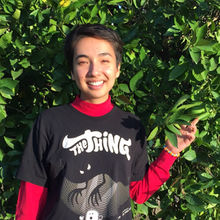
Claremont McKenna College - USA
Bio: dri loves writing and performing spoken word poetry, drawing comics and looking for the connections between things. They are fascinated by rock climbing and farming but are still a beginner at both. dri grew up in Taipei, Taiwan before moving to Portland, Oregon for the second half of high school, and to Southern California for college. They studied abroad in Tanzania for the spring 2019 semester, and are really excited for the summer!
Research Project: What Could Hold All Of Us? Class Segregation and Interaction in North American Restaurants
As wealthier residents take Ubers to work instead of public transit, and shop at organic grocery stores instead of Walmart, common spaces for cross-class interaction decrease. A subtle form of segregation arises in which people’s social networks do not overlap. This project uses restaurant and review data from the Yelp Academic Dataset to investigate this phenomenon of segregation of urban consumption. First, we define a measure of restaurant consumer segregation based on the statistical measure of entropy. We use this entropy measure to explore several scales, spanning individual users, businesses, cities and metro areas. By aggregating the data in different ways, we compare different cities, different categories of businesses, and map spatial distributions to understand what factors cause a place to be more segregated or integrated. Simultaneously, this project functions as an exploration of the potential for data from digital platforms to provide real-time, fine-grained insights on neighborhood change.
Mentor(s): Andy Rominger, Vicky Yang, Hajime Shimao
Aram Moghaddassi
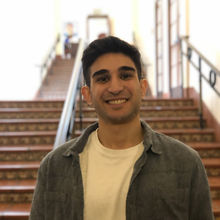
University of California, Berkeley - USA
Bio: Hey everyone, I'm a sophomore at UC Berkeley, studying applied math and computer science. Some of my hobbies include board games/logic puzzles (fun fact: can solve a Rubiks cube in under 20 seconds), rock climbing, and camping/backpacking (I'm always up for a hike, and hear SFI has some nice trails nearby). I'm really looking forward to meeting and working with you all this summer!
Research Project: A Robust and Realistic Model for Associative Memory
The Hopfield network (HN) is a popular model for associative memory and is a seminal example of fixed point attractor dynamics. The model has been studied in both a computational setting, for image recognition, optimization, and other problems, and from a neuroscience perspective; Brunel 2016 showed that these attractor dynamics are likely at work in the brain. However, these two views are often quite disconnected; namely, our computational models are based on network architectures that are very dissimilar from true neural networks in the brain. Our goal is to bridge this gap using a very simple pruning rule for HNs, where we progressively prune out the low magnitude edges from a fully connected HN. We find that these networks demonstrate a high degree of clustering based on correlated activity across stored states, a pattern that is very similar to the organization of neurons in the brain. Further, these pruned networks highly outperform the random benchmark across all metrics we considered.
Mentor(s):Albert Kao and Maria Riolo
David Armendariz
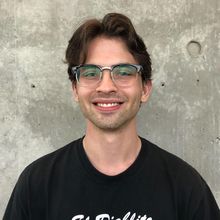
University of Texas at El Paso - USA
Bio: Hello! I'm a senior undergraduate student studying math at the University of Texas at El Paso. I'm especially fascinated with interdisciplinary work and using math as a framework for abstracting and understanding real-world systems. I enjoy all kinds of outdoor activity such as rock climbing and hiking, reading, and listening to and playing music.
Research Project:
Topological Reconstruction of Antarctica's Paleoclimate System Using a Deep Polar Ice Core
Overview: The core concept behind the theory of delay-coordinate embedding is that, given an observable deterministic dynamical system and some assumptions, one can reconstruct the dynamics of the system using a scalar time series of observations. The dynamical properties of the reconstructed system are invariant under diffeomorphism and therefore are identical (up to diffeomorphism) to the dynamical properties of the original system.
Mentor(s):
Joshua Garland
Elisa Heinrich Mora
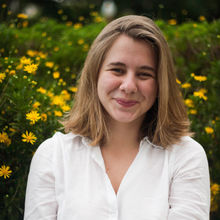
Minerva Schools at KGI - USA/International
Bio: I am a rising senior at Minerva Schools at KGI, majoring in Math and CS, but with an unhidden passion for Physics and Arts. I am from Asunción, Paraguay, but in the last couple of years, I have been living in different places. I am basically interested in everything, which is one of the reasons why I applied to SFI. Excited to meet you all!
Research Project:
Understanding Urban Inequality through the Reinforcing Stochastic Schelling Model
More than half of the global population is currently urbanized. This rapid urbanization expansion while boosting economic growth, negatively affects the ability of cities to keep up with the demands of the growing population, affecting the access to opportunities, infrastructure, and basic services. While urban areas generate more than 75% of global GDP, they also include over 863 million urban dwellers living in slums and informal settlements. In this project, I simulate and analyze a simplified model of urban wealth inequality in cities. This model builds a general statistical dynamics of cities that includes growth and heterogeneity across scales, from single agents to urban systems. The model implements these dynamics by using stochastic differential equations, to show how it naturally leads to emergent statistical properties deriving from standard limit theorems. The goal of this project is to identify the macroscopic dynamics of urban inequality from the stochastic behavior of the individuals while also considering the effect of a spatial dimension through a Schelling Model.
Mentor(s):
Chris Kempes and Vicky Chuqiao Yang
Gabriel Goren
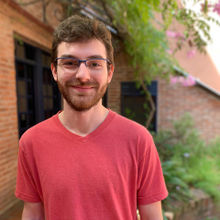
Universidad de Buenos Aires (UBA) - Argentina
Bio: I am a Physics student from Buenos Aires, Argentina, with a very strong inclination towards mathematics and computer science. I am fascinated by the concepts of information and abstraction, which seem to bring together many different fields in an interesting yet elusive way. I love mountains and contemplating nature (and cities as well!), discussing philosophy, board games and music (listening, composing and playing, though I am a bit rusty on the last two).
Research Project: Inferring Finite State Machines from Time Series
How can one extract structure out of a sequence of observations, while using minimal assumptions? And what is structure, anyway? During this summer, I’ve been working with a very general inference framework based around the concept of the epsilon-machine of a process, in which the main idea is that structure in a system emerges from discarding all information about its history that is not predictive of its future. My project revolves around how the theory of epsilon-machines translates to a realistic scenario, in which one has access to a limited amount of data and computing power, and trying to understand how these limitations induce failures in the process of inferring an epsilon-machine.
Mentor(s): Cristopher Moore, Joshua Garland
Gülce Kardeş

Middle East Technical University - Turkey
Bio: I am Gülce, a junior from Turkey, studying physics at METU. My previous works include the modeling and simulation of everyday phenomena since I love to be challenged with the most cryptic faces of nature in seemingly simple cases. I am fascinated by the world and the brain as an occupant of both, thus, I have an appetite for a display of the physical underpinnings of perception. I enjoy hiking and playing interactive games in my free time. I love freshly roasted coffee beans and atonal sounds.
Research Project: Algorithmic Identification of Observers in Arbitrary Dynamical Systems
Since Shannon’s introduction to information theory, we have tended to fix our attention to a syntactic analysis of information. Yet a profound disclosure of meaning in information is reported by a group of systems (e.g. biological organisms) that use information from their environment which causally contributes to their ability of maintaining existence. In this study, we consider the problem of identifying such systems, called observers, that render a priori companion of semantic information (Kolchinsky and Wolpert, 2018) possible. We introduce spin models as a platform in which we construct an identification procedure. Our findings present the physical properties of spin systems that have determinant role in specifying observers. We also investigate further characteristics of semantic information, and list several implications to discuss the applicability of our work to any physical system.
Mentor(s): David Wolpert
Jacob Jackson
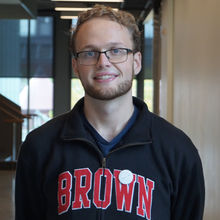
Brown University - USA
Bio: I am a junior at Brown studying Math-Physics, though my interests extend to the humanities and social sciences as well. I am interested in using my physics background to work on interesting interdisciplinary projects at SFI. Outside of my studies, I love to teach and am leaving a Spring gap semester teaching in Hanoi, Vietnam. I also love to perform music, play RPGs, go running, and build community wherever I go.
Research Project: Urban Externalities in an Urban Scaling Framework
At a time when countries are rapidly urbanizing across the globe, recent work in urban scaling theoryhas provided greater insight into developing a fundamental understanding of cities by modeling socioeconomic outcomes (e.g. GDP) as the outputs of only local social interactions. However, intoday’s highly Global world, a theory that isolates a city from the Global network of cities is missing a crucial part of the picture. This research demonstrates the significance of Urban Externalities for understanding cities through the urban scaling framework. Several models are proposed to incorporate externalities into a more comprehensive scaling model for cities and are shown to be significant improvements to the standard scaling model. The model which best fits the data suggests that local social interactions account for only about 70% of socioeconomic outputs in a city, whereas the other 30% can be attributed to non-local social interactions (externalities), things such as tourism, global business ventures, foreign investment, and more
Mentors: Vicky Yang, Chris Kempes, Tamara van der Does
James Slaughter
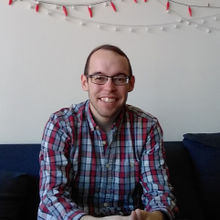
University of Mississippi
Bio: Undergraduate economics student at the University of Mississippi. Primarily interested in topics related to rural economic development, technological change, economic history, and public policy.
Research Project: Origins of Agriculture in the Middle East
Shortly after the end of the Pleistocene (colloquially known as the “Ice Age”), people began to intensively cultivate and domesticate plants at different sites all across the world. That is to say, people began to practice agriculture. These episodes of agriculture seem to have started at similar times but also independent of one another. Many explanations have been proposed for why this occurred. Using plant domestication data compiled from the Neolithic Middle East, we propose that a 500-year lag in climate variance is a major predictor of agriculture emerging. We illustrate the relationship between variance in climate and the failure to domesticate plants using a logistic regression model, which predicts the possibility of agriculture emerging during Pleistocene.
Mentor(s): Mike Price and Hajime Shimao
Nachama Stern
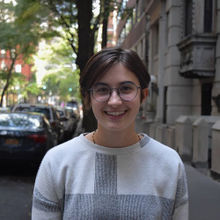
Brooklyn College, City University of New York - USA
Bio: Hey everyone! I'm a sophomore at Brooklyn College, City University of New York, majoring in physics. I love hiking/exploring and I'm never one to pass up a board game night (Settlers of Catan is an all-time favorite). Can't wait to meet everyone!
Research Project: Inverto Cactido: The Ultimate Puzzle
What makes a good puzzle and how can we quantify it? This summer I established criteria for determining an interesting and fun spatial puzzle. With this, I designed and constructed Inverto Cactido, a cube with an internal network of tunnels. Using the holes on each face and different length pegs provided, the goal of the puzzle is to place all 15 pegs such that the intersections of the tunnels allow all pegs to fit inside the cube completely. Mathematizing and computationally solving for the solutions of my puzzle gave rise to an interesting theory behind the graph representation of puzzles, and the way in which one can adjust puzzle difficulty such that the player attains a state of flow.
Mentor(s): Andy Rominger, Cris Moore, Chris Kempes
Naomi Rankin

Howard University - USA
Bio: Hi! I'm a rising sophomore at Howard University from Albuquerque, NM where I major in Applied Mathematics, with double minors in Computer Science and Biology. I am interested in basically all things disease related. For my future research, I want to create computational models of diseases, in order to find better ways to solve outbreaks. For fun, I enjoy watching Black Mirror and reading dystopian future books in preparation for the zombie apocalypse.
Research Project: The Effect of Age on the Spread of Vaccine Hesitancy
Despite the eradication of measles in the US in 2000, there have been a high number of cases over the past couple of years. This is due to vaccine hesitancy in parents, where they are less likely to support the vaccination of their children due to a variety of expected risks or side effects. The spread of misinformation between parents is an important reason for the lapse in vaccination rates. In order to decrease the impact of anti-vaccine people, one must study their impact on the community. In previous studies, researchers have examined the type of people that spread anti-vaccine sentiments. They have also examined the connections between people of different ages. We hypothesize that certain age groups might have a different effect on the spread of anti-vaccine beliefs because of age-based network clustering. In order to explore the impact of age on connections and the spread of beliefs, I created an agent-based model and explored some theoretical simulations to see what the most accurate scenario is, and to see which group is most influential in spreading information on a network.
Mentor(s):Tamara Van Der Does, Maria Riolo
Shaili Mathur
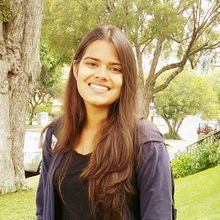
University of California, Los Angeles - USA
Bio: I'm a Computational and Systems Biology major at UCLA, and I'm interested in combining modelling and data analysis to understand biological systems quantitatively. I'm really interested in how components of biological systems come together and what their emergent properties are. I'm an animal lover and I enjoy spending time horse riding, sculpting and reading. I'm looking forward to exploring Santa Fe over the summer!
Research Project: Understanding Antibiotic Susceptibility across Bacterial Diversity through Metabolic Scaling Theory
How antibiotic efficacy varies with bacterial species is of basic and applied importance, including understanding of microbial dynamics in clinical and ecological contexts with possible consequences for the community structure of the microbiome. The scaling of cellular components in bacteria and their impact on metabolic, cellular, and evolutionary processes will help illuminate this question and possibly reveal an important role for cell size across bacterial species. Cellular components that antibiotics target—DNA, proteins, mRNA, tRNA, cellular envelope, and ribosomes—all scale non-linearly with cell volume. Moreover, previous research has elucidated the mechanism by which antibiotics inhibit the functioning of these cellular components. We develop theory that shows how antibiotic efficacy may depend on cell size based on the specific cellular components targeted by the antibiotics and the nonlinearities between those components and cell size. Here, we present data, and predictive models for aminoglysocides and beta-lactam antibiotics.
Mentor(s): Chris Kempes
Zhijie Feng
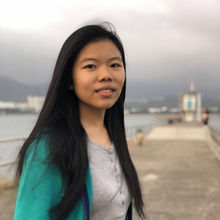
Hong Kong University of Science and Technology - Hong Kong
Bio: I'm a third-year physics student at the Hong Kong University of Science and Technology. I'm passionate about statistical physics, condensed matter physics, and complex system. Fascinated by the topics related to randomness, I have previous research experience in random walk, spin models, and opinion dynamics. I also enjoy archery, choral singing, piano, arts, and design.
Research Project: Stochastic Demand-Driven Transport
With the growth of cities, the role of elevators in daily transportation is becoming more and more important. In this work, we propose a minimal model of the elevator transport process for the opening-of-day, when people arrive at the ground floor as a Poisson process and take the elevator with the first-come-first-serve rule. We derived the mean value and distribution of waiting time and the critical rate for jamming transition. With an equivalence to biased random walk in semi-infinite interval, the number of people still waiting for the elevator after each transport follows an exponential distribution. We simulate the process and verify all the analytical solution by an event-driven algorithm that works for any number of elevators efficiently with unchanged complexity. Moreover, we report synchronization by measuring the inter-arrival time of elevators as an extra phase transition in multiple elevator systems.
Mentor(s): Sidney Redner
REU Alumni Fellows
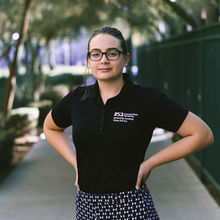
Megan Bromley - Arizona State University (ASU)
Bio: Hello! I am a senior at Arizona State University studying Earth and Space Exploration and Creative Writing. I was an REU last summer (2018) and am excited to be returning to write up some of last year's research more formally! Feel free to talk to be about whatever you'd like.
Mentor: Manfred Laubichler

Sahana Subramanyam - Azim Premji University to Bocconi University
Bio: I'm a returning REU majoring in economics and social science. I'm currently working on a textual analysis of economics research over the last 100 years. Excited to be back and looking forward to meeting everyone!
Mentors: Samuel Bowles and Wendy Carlin
